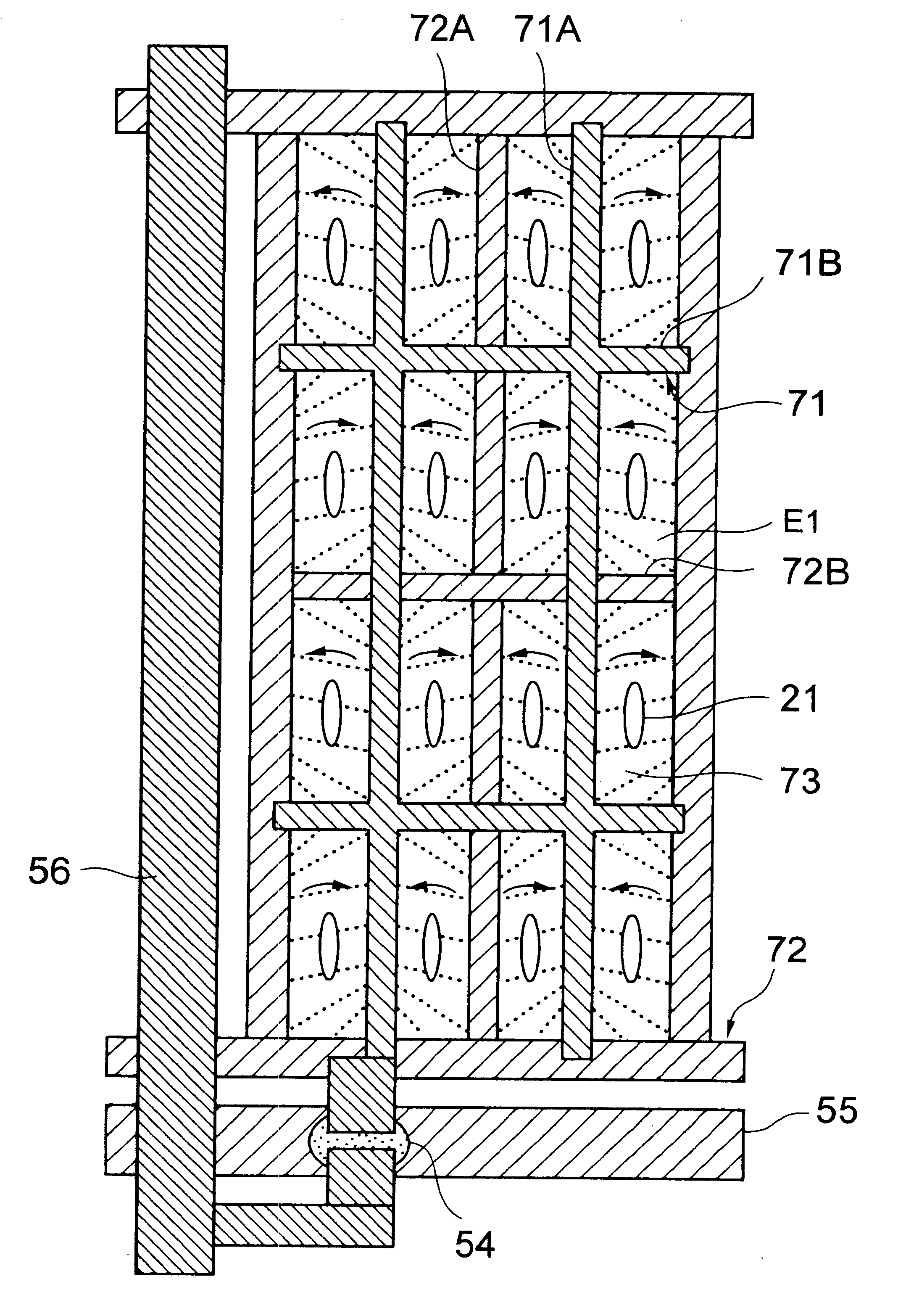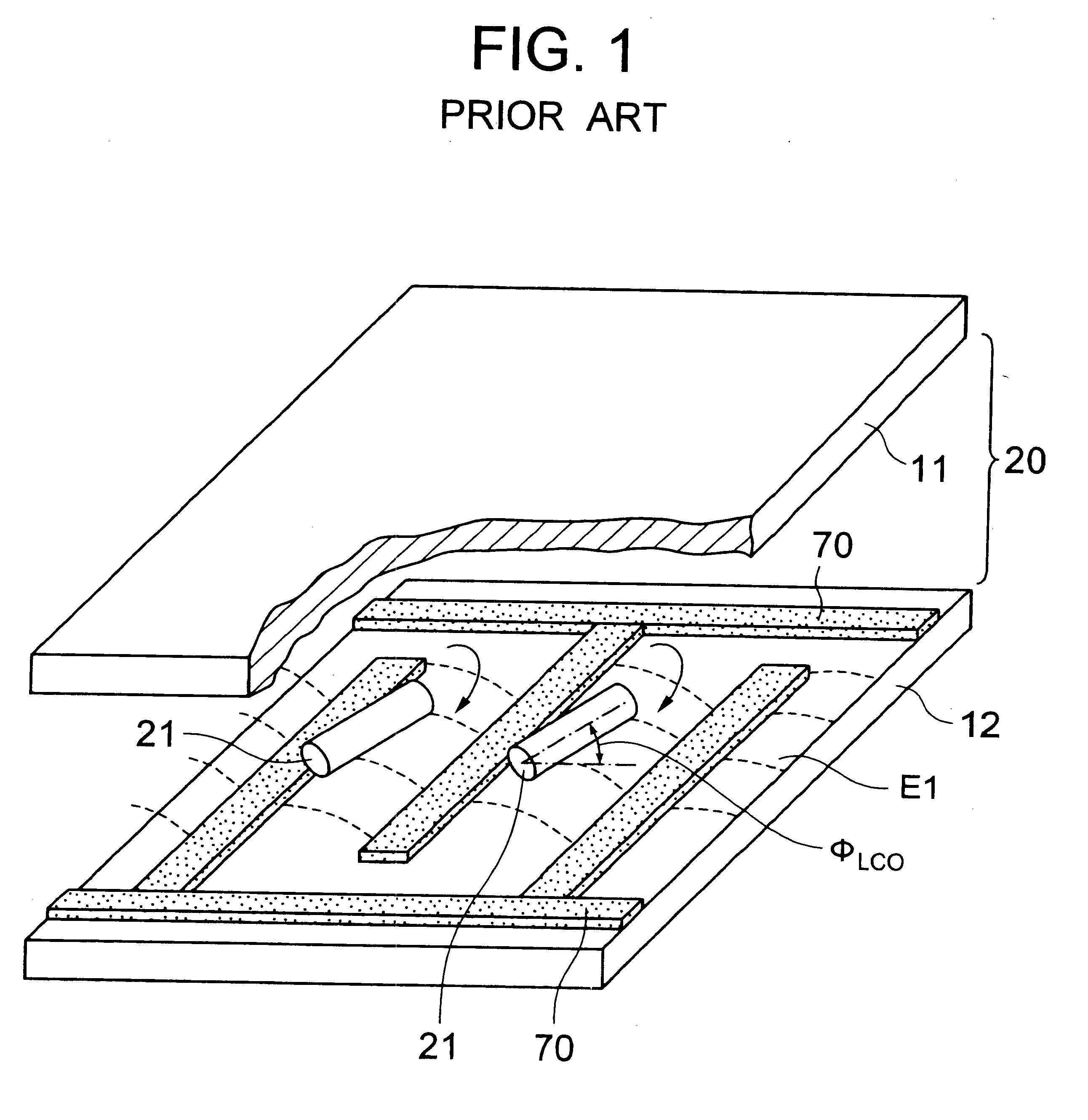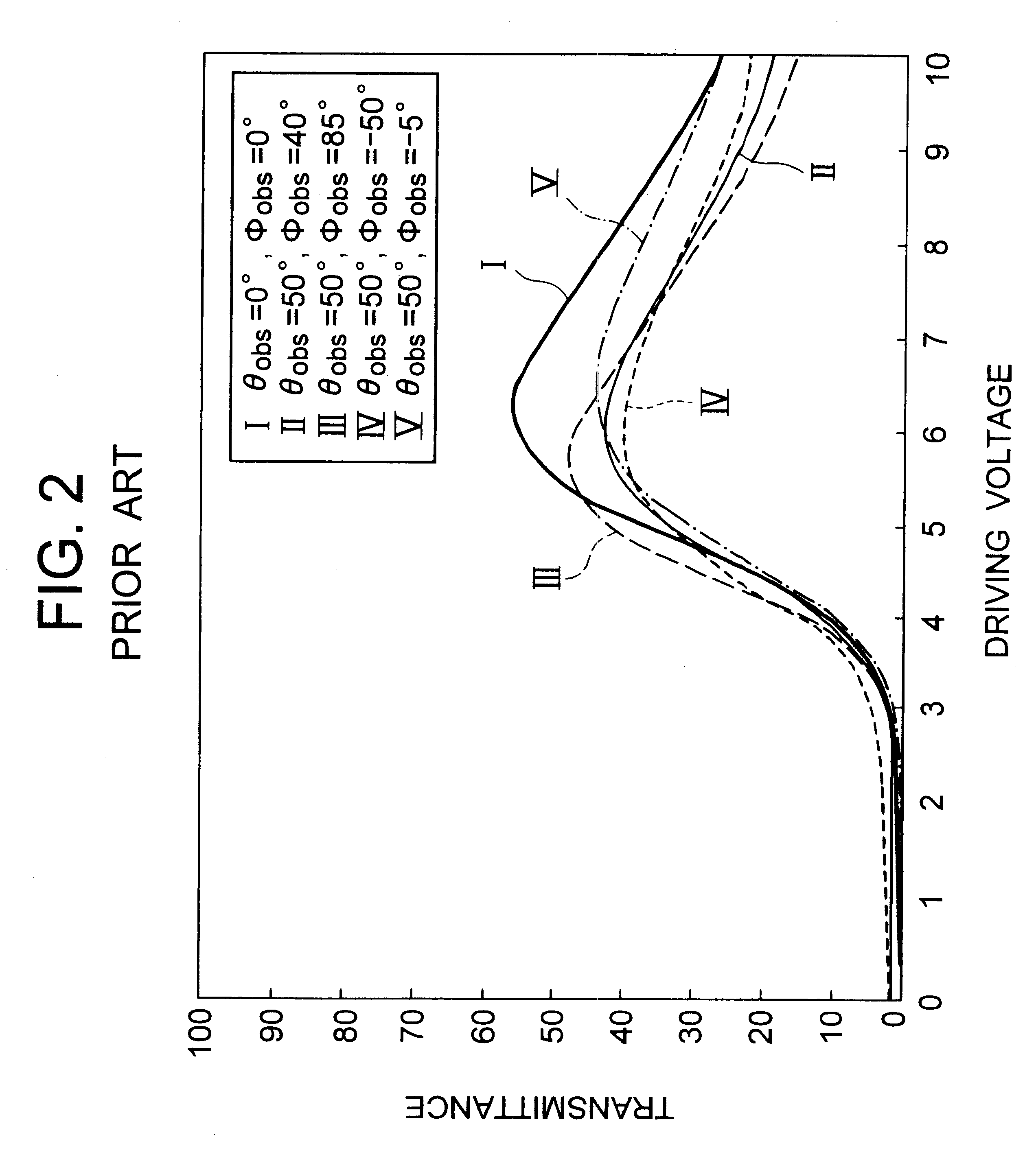In-plane switching scheme liquid crystal display unit
- Summary
- Abstract
- Description
- Claims
- Application Information
AI Technical Summary
Problems solved by technology
Method used
Image
Examples
Embodiment Construction
Now, the present invention is more specifically described with reference to accompanying drawings.
Referring to FIG. 6, there is shown a LC cell of an IPS-LCD unit according to a first embodiment of the present invention, with a front substrate being omitted. The IPS-LCD unit includes the front (first) substrate disposed at the near side of the drawing, a LC layer including LC molecules having a uniform initial alignment, and a rear (second) substrate disposed at the far side of the drawing, which are consecutively disposed in the direction opposite to the travelling direction of the back-light. The rear substrate includes a plurality of gate bus lines 55 extending in the horizontal direction, a plurality of drain bus lines 56 extending in the vertical direction. A plurality of pixel areas or LC cells are disposed in a matrix, each pixel area being substantially of a rectangular shape defined by adjacent gate bus lines 55 and adjacent drain bus lines 56. An active element 54 implemen...
PUM
 Login to View More
Login to View More Abstract
Description
Claims
Application Information
 Login to View More
Login to View More - R&D
- Intellectual Property
- Life Sciences
- Materials
- Tech Scout
- Unparalleled Data Quality
- Higher Quality Content
- 60% Fewer Hallucinations
Browse by: Latest US Patents, China's latest patents, Technical Efficacy Thesaurus, Application Domain, Technology Topic, Popular Technical Reports.
© 2025 PatSnap. All rights reserved.Legal|Privacy policy|Modern Slavery Act Transparency Statement|Sitemap|About US| Contact US: help@patsnap.com



